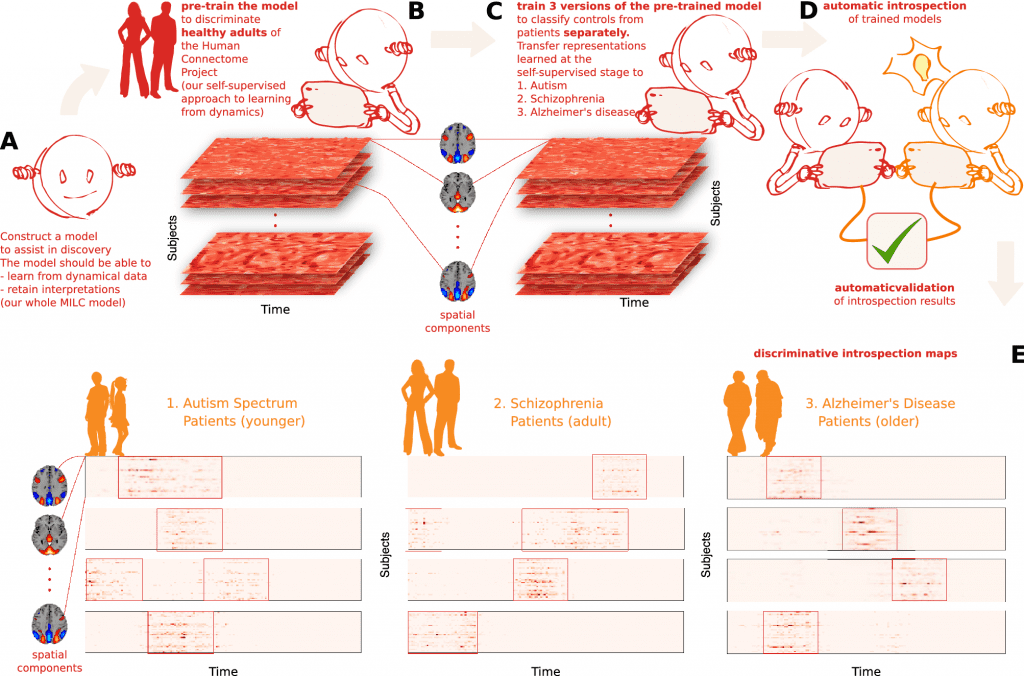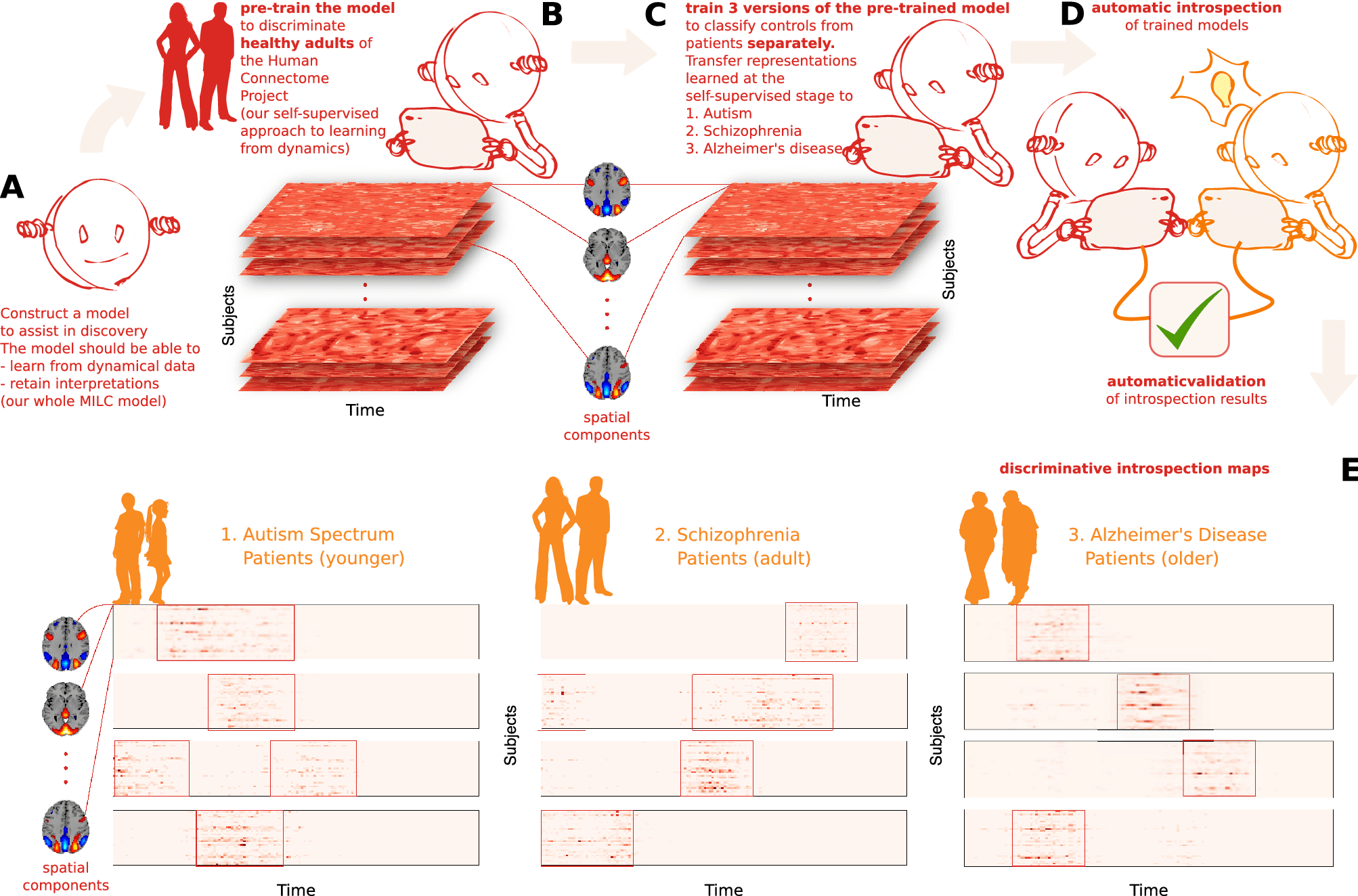In order to better prevent and cure debilitating ailments including Alzheimer’s disease, schizophrenia, and autism, new research at Georgia State University’s TReNDS Center may result in early detection.

Image Source: https://doi.org/10.1038/s41598-022-15539-2
For a recent study published in Nature Scientific Reports, a team of seven scientists from Georgia State University created a sophisticated computer program to sift through enormous amounts of brain imaging data and discover unexpected patterns related to mental health disorders. The brain imaging data were generated using functional magnetic resonance imaging (fMRI) scans, which measure dynamic brain activity by detecting minute fluctuations in the flow of blood.
Although exceedingly complicated, brain dynamics are the key to understanding how the brain functions and malfunctions. Functional magnetic resonance imaging resting-state dynamics are noisy, high-dimensional, and difficult to understand.
The conventional method of focusing on the most predictive elements and reducing this data to low-dimensional features contains a number of strong assumptions that run the risk of omitting critical facets of the underlying dynamics. However, introspection of discriminatively trained deep learning models may reveal aspects of the signal that are relevant to disorders at the level of specific time points and spatial locations.
According to Sergey Plis, the study’s lead author and an associate professor of computer science and neuroscience at Georgia State University, the researchers built artificial intelligence models to analyze the significant amounts of data from fMRI.
The researchers compared this kind of dynamic imaging to a movie rather than a snapshot like an x-ray or the more well-known structural MRI. The accessible data is much larger and richer than a blood test or a standard MRI. But the difficulty of understanding so much data is the issue.
Furthermore, obtaining fMRIs in these specific circumstances is expensive and challenging. However, with the application of an artificial intelligence model, the regular fMRI’s can be data mined. And those are available in large numbers.
According to one of the study’s authors and founding director of the TReNDS Center, Vince Calhoun, individuals without a confirmed clinical condition have access to large databases. The inclusion of these large but unrelated public datasets improved the model’s performance on smaller, more targeted datasets.
Calhoun further explained new patterns formed that could be categorically attributed to each of the three brain disorders.
The AI models were initially trained on a dataset of more than 10,000 individuals, where they were introduced to the foundations of fMRI imaging and brain activity. The researchers then employed multi-site data sets of over 1200 individuals, including those with Alzheimer’s disease, schizophrenia, and an autism spectrum disorder.
How does it work? The process is comparable to how Facebook, YouTube, or Amazon get to understand you from your online behavior and begin to predict your future behavior, likes, and dislikes. Even more impressively, the computer software identified the precise “time” when the brain imaging data most strongly revealed a relationship with the pertinent mental condition.

Image Source: https://doi.org/10.1038/s41598-022-15539-2
To be therapeutically valuable, these findings must be applied prior to the onset of a condition.
According to Calhoun, we might be able to take action if we can determine the Alzheimer’s disease risk factors in a 40-year-old and predict that risk using markers.
Similar to this, if schizophrenia risks can be identified before real changes in brain structure, there might be ways to deliver better or more effective therapies.
Even if it is known through prior testing or family history that someone is at risk for a disease like Alzheimer’s, Calhoun said it is still not possible to predict precisely when it will occur. Brain imaging could reduce that window by identifying pertinent patterns as soon as they appear before a clinical illness becomes apparent.
The plan, according to Plis, is for our AI models to analyze a vast imaging dataset and then inform us of what they learned about certain disorders. In order to acquire new knowledge that we are unable to achieve on our own, we are developing systems.
Md. Mahfuzur Rahman, the study’s first author and a doctoral student in computer science at Georgia State University, stated that bridging vast worlds and massive datasets with tiny worlds and disease-specific datasets and moving towards markers relevant for clinical decisions was the study’s stated purpose.
Story Source: Rahman, M.M., Mahmood, U., Lewis, N. et al. Interpreting models interpreting brain dynamics. Sci Rep 12, 12023 (2022). https://doi.org/10.1038/s41598-022-15539-2 https://news.gsu.edu/2022/07/21/dynamic-mental-illness-indicators-caught-by-advanced-ai-in-brain-imaging/
Learn More About Bioinformatics:
Top Bioinformatics Books ↗
Learn more to get deeper insights into the field of bioinformatics.
Top Free Online Bioinformatics Courses ↗
Freely available courses to learn each and every aspect of bioinformatics.
Latest Bioinformatics Breakthroughs ↗
Stay updated with the latest discoveries in the field of bioinformatics.
Dr. Tamanna Anwar is a Scientist and Co-founder of the Centre of Bioinformatics Research and Technology (CBIRT). She is a passionate bioinformatics scientist and a visionary entrepreneur. Dr. Tamanna has worked as a Young Scientist at Jawaharlal Nehru University, New Delhi. She has also worked as a Postdoctoral Fellow at the University of Saskatchewan, Canada. She has several scientific research publications in high-impact research journals. Her latest endeavor is the development of a platform that acts as a one-stop solution for all bioinformatics related information as well as developing a bioinformatics news portal to report cutting-edge bioinformatics breakthroughs.












